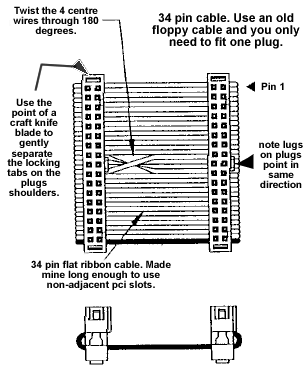First post, by pjladyfox
Everyone,
I've been reading, digging, and researching here and elsewhere on what would be the most optimal build for a retro-PC gaming system. However, I am a realist in that it has been quite awhile since I've dabbled in the dark arts known as DOS and older PC hardware so I come to all of you to solicit feedback on the template I will be using for two systems.
System 1: DOS/Win98SE non-emulation box
Pentium III 733 MHz Slot-1 (with a Pentium II 233 Mhz to slot in for VERY old DOS titles)
A Intel 440 BX-based motherboard with two ISA slots
512MB PC133 SDRAM
Nvidia RIVA TNT 16MB AGP
3DFX Voodoo1 4MB
Sound Blaster 16 ASP ISA card
The thought behind this system was to provide the maximum flexability in being able to switch between DOS and Windows 98SE without having to resort to any kind of emulation in order to get a game to run. Based upon what research I've found the general thoughts were that as long as the CPU could be kept within the 200 to 233Mhz range that the use of slowdown applications, such as moslo, could be reduced or eliminated. The video card selection was based upon the ideal cards that would give maximum VESA compatibility for DOS titles as well as 3D support in both DOS and Windows. The complicated part was the sound card selection since there were a LOT of different ideas on what would be optimal. In the end, somewhat limited by motherboard selection that would support Coppermine P3's, I was able to compromise by slotting a SB 16 ASP, which can be supplemented with a Roland or Yamaha MIDI daughterboard, and leaving the last slot open for another ISA sound card and/or MIDI board.
System 2: Win98SE/DOSBOX system
Intel Pentium III 866 MHz
Intel 810 chipset motherboard with 1 AGP and 3 PCI slots
512MB PC133 SDRAM
Nvidia GeForce 3 64MB AGP
3DFX Voodoo2 12MB
Aureal Vortex2 SQ2500 Quad
The idea behind this system, obviously, was to provide the maximum compatibility for Windows-based titles while providing an optimal platform for the use of DOSBOX or other third-party applications for DOS gaming. The one part that was difficult was, yet again, sound card selection. I first was considering a SB Live! but, after reading that the SQ2500 Quad had a wavetable connector as well as good DOS support it seemed like a no-brainer IMHO.
Now, a lot of this was limited by the several boxes of spare parts I managed to cobble together from gutting a lot of old PC systems that were being retired from our office. However, some of them I managed to find on the cheap at a nearby surplus center on the cheap.
So, do these earn the VOGONS stamp of approval or is some more fine-tuning required?
